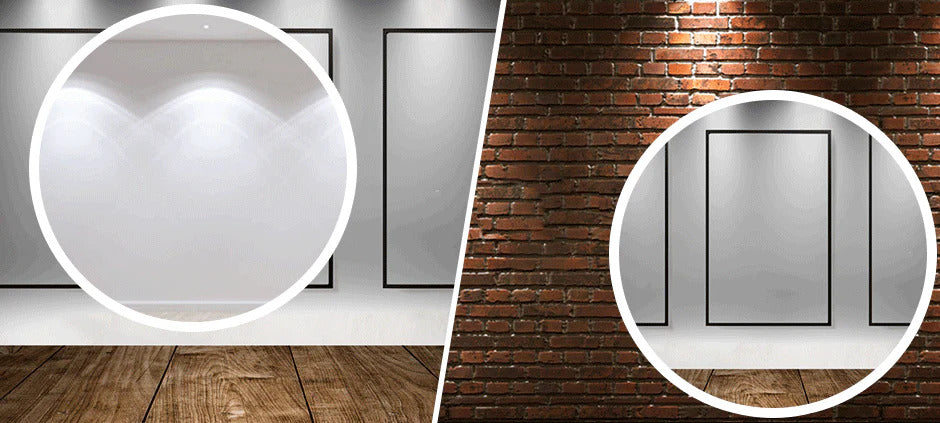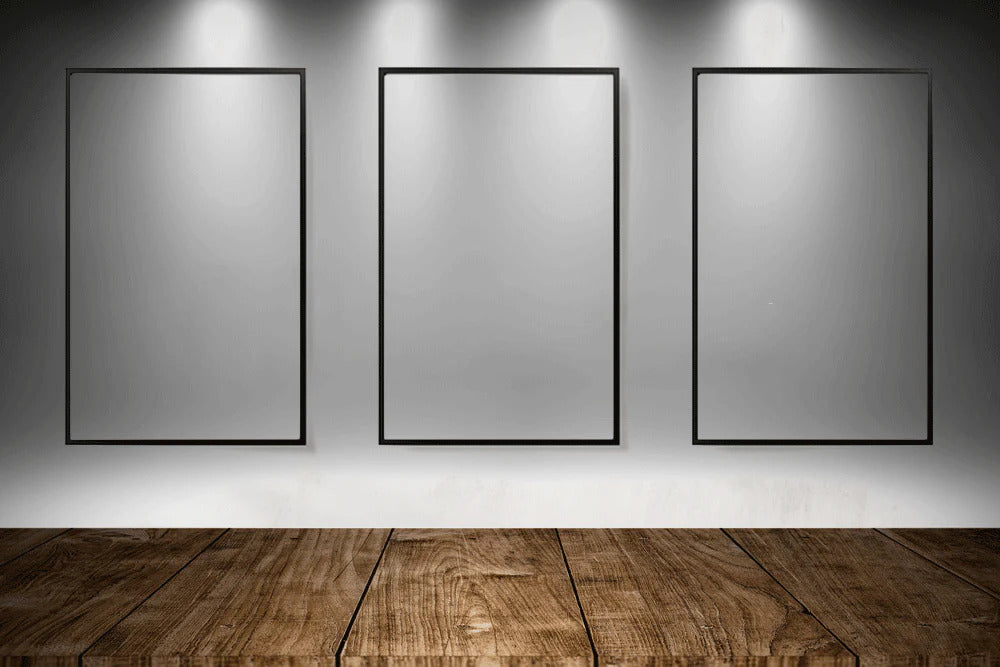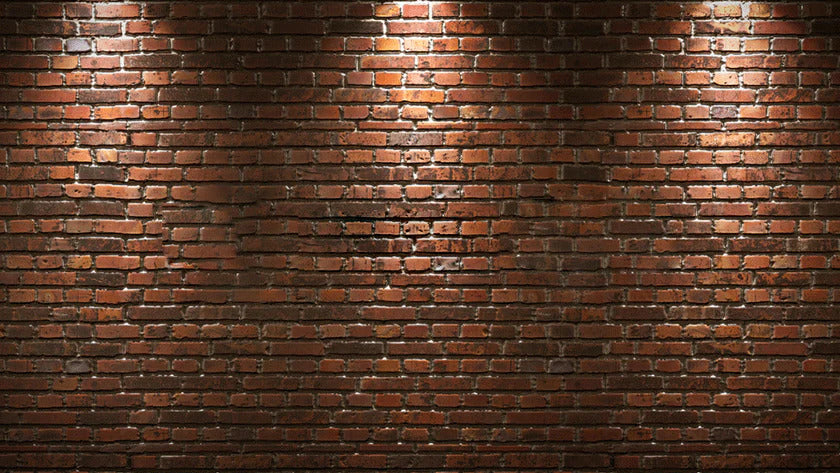Introduction to Wall Lighting

The way that vertical surfaces are illuminated can heavily manipulate our perception of space. Lighting can be designed to create dramatic shadows on interior and exterior walls to achieve visual interest and spatial openness in any residential or commercial setting. Some techniques for achieving dynamic wall lighting include washing, grazing, and scallop lighting.
Wall Washing

Wall washing is a lighting technique which illuminates a wall evenly to eliminate imperfections. This technique is particularly useful for lighting in galleries as it brightly illuminates and clarifies the surface, placing focus on the artwork or photography. In residential spaces or commercial settings, wall washing is an excellent architectural tool as it makes the room feel more spacious and open.
To create this effect, select downlights with a wide beam angle of 60 degrees or greater for a vast spread of light. A downlight with an angled recess or a gimbal feature is suitable for this technique so that the beam can be angled to directly impact the wall, rather than simply skimming the surface. A wall wash trim can also be used to block the part of the light which faces away from the wall.
Space the downlights a little further from the wall, up to 1 metre away. The distance between downlights should equal the set-back distance from the wall. Alternatively, downlights can be installed even closer together than the set-back distance, achieving a brighter and more uniform look.
Wall Grazing

Wall grazing is a lighting technique which highlights the texture by pronouncing shadows. This technique achieves aunique and dramatic effect for walls with textured materials such as stone or brick. This type of lighting is also great for outdoor use to upshine statues, carvings, or trees in garden lighting.
To create this effect, select spotlights or downlights with a narrow beam angle less than 60 degrees. These lights should be placed quite close to the wall, at a set-back distance of about 150mm - 300mm. Shine the light directly vertically so that the length of the beam gently skims the textured surface. Recessed downlights can be installed in the ceiling for indoor wall grazing. Alternatively, spike spots can be used in outdoor garden lighting to shine light upwards from the ground.
Scallop Lighting

For a visually dynamic light feature, try the scallop lighting method. This method createsoverlapping arches of light on the wall.
To achieve this look, use recessed downlights with a beam angle of less than 60 degrees. Space the downlights apart at twice the distance that you space them from the wall. For example, if your set back distance from the wall is 0.5m, then you would install the lights 1m away from each other.
Create a soft scallop by using a recessed downlight with a white interior baffle or chrome reflector. These will reflect some light by slightly widening and diffusing the edges of the light beam. Alternatively, a crisper scallop can be achieved by using a black baffle downlight, which will absorb the edges of the light beam, creating clean scallop lines. To get started on your wall lighting design, check out our extensive range of architectural downlights: https://elekzon.com.au/collections/downlight




